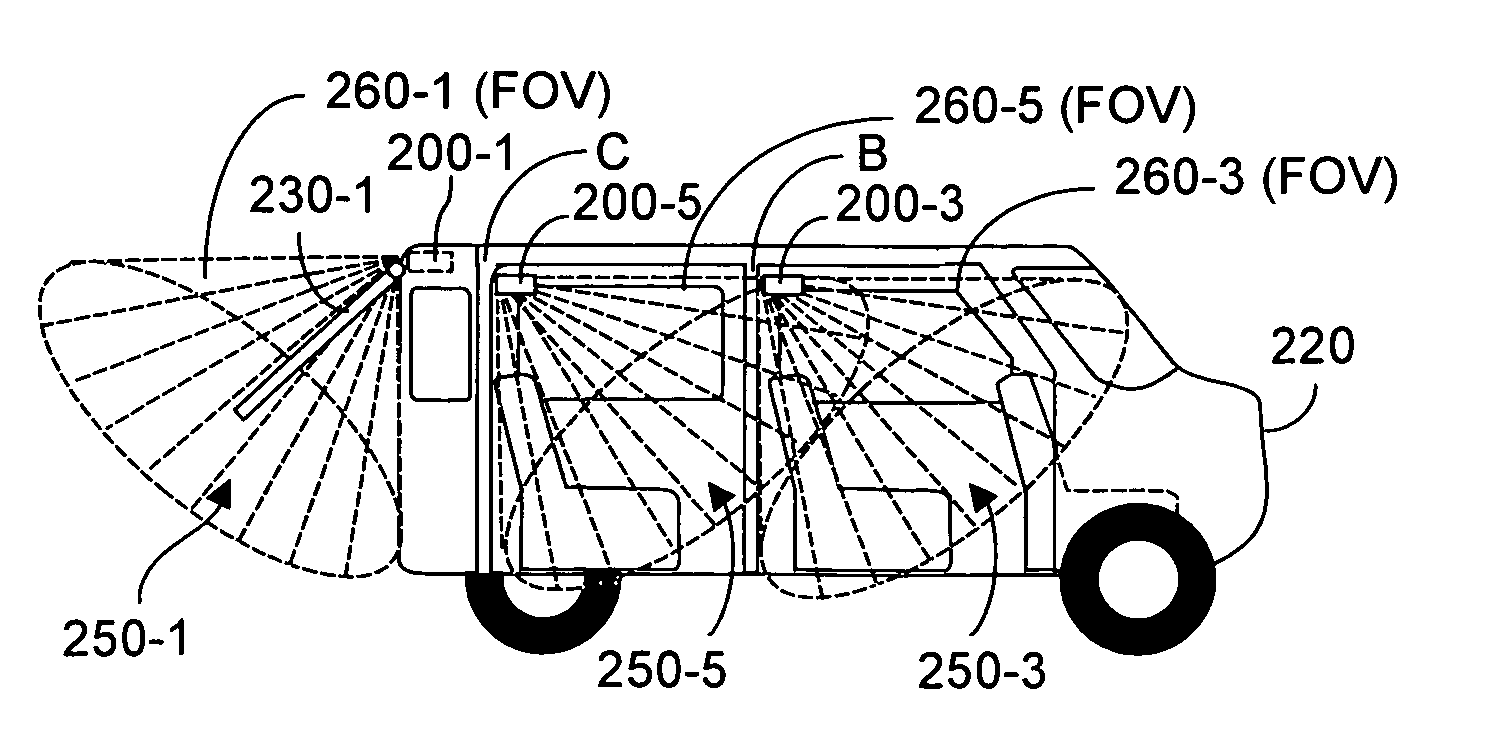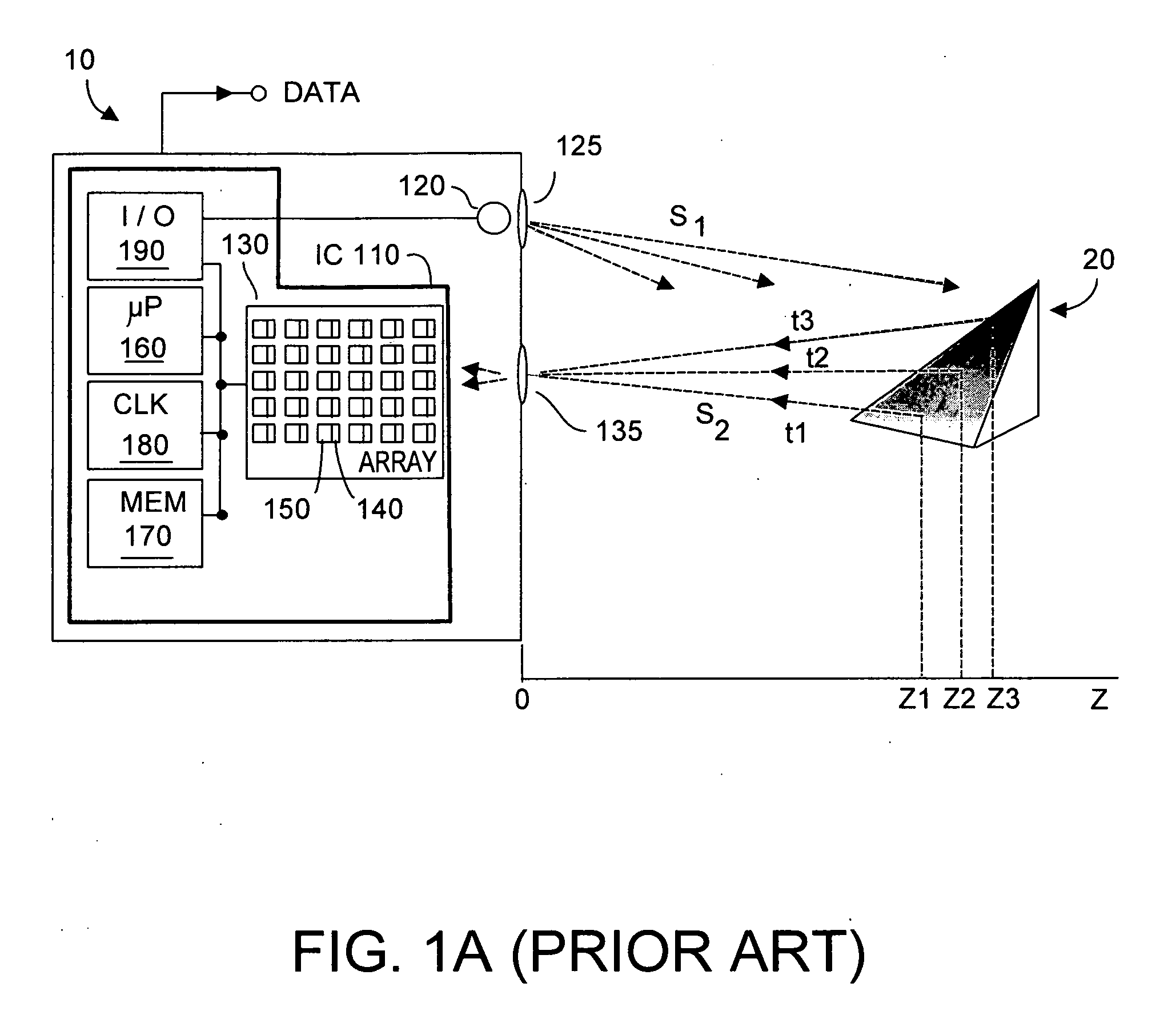Contactless obstacle detection for power doors and the like
a technology of power doors and obstacles, applied in emergency protective circuit arrangements, motor/generator/converter stoppers, process and machine control, etc., can solve problems such as the door frame and/or the risk of a non-compliance with the door, and achieve the effect of rapid determination
- Summary
- Abstract
- Description
- Claims
- Application Information
AI Technical Summary
Benefits of technology
Problems solved by technology
Method used
Image
Examples
Embodiment Construction
[0044]FIG. 3 depicts a TOF system 200 used to implement contactless obstacle sensing, according to embodiments of the present invention. Preferably system 200 is phase-based, and elements shown in FIG. 3 bearing reference numerals identical to those shown for FIG. 2A may be considered to be similar if not identical elements. However memory 170 in system 200 preferably stores at least one software algorithm routine 210 that upon execution, e.g., by processor 160 or other processing resource, carries out embodiments of the present invention.
[0045]Preferably system 200 is CMOS-compatible and can be mass produced economically for perhaps $100 per system in quantity. System 200 preferably consumes relatively low operating power, perhaps 12 W, from the electrical system of the motor vehicle with which it is used. Emitter 120 preferably comprises several parallel-coupled diffused LED devices outputting perhaps 1W to 2W of optical energy in the 850 nm to 870 nm wavelength range, with exempl...
PUM
 Login to View More
Login to View More Abstract
Description
Claims
Application Information
 Login to View More
Login to View More - R&D
- Intellectual Property
- Life Sciences
- Materials
- Tech Scout
- Unparalleled Data Quality
- Higher Quality Content
- 60% Fewer Hallucinations
Browse by: Latest US Patents, China's latest patents, Technical Efficacy Thesaurus, Application Domain, Technology Topic, Popular Technical Reports.
© 2025 PatSnap. All rights reserved.Legal|Privacy policy|Modern Slavery Act Transparency Statement|Sitemap|About US| Contact US: help@patsnap.com



